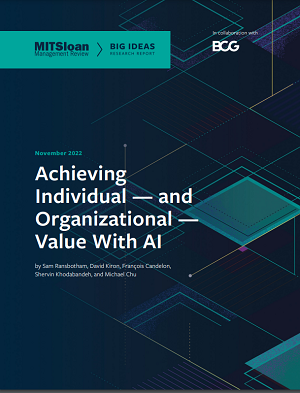Researchers from MIT and the MIT-IBM Watson AI Lab developed a technique to estimate the reliability of foundation models before they are deployed to a specific task. They do this by considering a set of foundation models that are slightly different from one another. Then they use their algorithm to assess the consistency of the representations each model learns about the same test data point. If the representations are consistent, it means the model is reliable.
MIT News: How to Assess a General-purpose AI Model’s Reliability Before It’s Deployed
Research Highlights: MIT Develops First Generative Model for Anomaly Detection that Combines both Reconstruction-based and Prediction-based Models
Kalyan Veeramachaneni and his team at the MIT Data-to-AI (DAI) Lab have developed the first generative model, the AutoEncoder with Regression (AER) for time series anomaly detection, that combines both reconstruction-based and prediction-based models. They’ve been building it for three years—AER has been learning and extracting intelligence for signals and has reached maturity to outperform the market’s leading models significantly.
MIT Experts on What You Need to Know Now about Data Analytics
In a new series, “The Analytics Edge,” published by MIT Sloan School of Management’s Ideas Made to Matter, MIT Sloan faculty, alumni, and industry experts share practical tips for developing and cultivating a strong analytics practice designed to give companies and organizations a distinct advantage for the future.
AI For the Future of Work.
AI has been a buzzword and businesses are all at different stages of implementing it. But is it actually solving anything? MIT Sloan and Boston Consulting Group (BCG) answer that question in a new report Achieving Individual – and Organization- Value with AI. Among respondents who report that their organization obtains moderate, significant, or extensive value from AI, the vast majority (85%) claim that they personally obtain value from AI.
Research Highlights: ExBERT
In the insideAI News Research Highlights column we take a look at new and upcoming results from the research community for data science, machine learning, AI and deep learning. Our readers need to get a glimpse for technology coming down the pipeline that will make their efforts more strategic and competitive. In this installment we review a new paper: EXBERT: A Visual Analysis Tool to Explore Learned Representations in Transformers Models by researchers from the MIT-IBM Watson AI Lab and Harvard.
How to Produce Cleaner Data for Robust Pricing
In this contributed article by MIT Sloan School of Management Prof. Negin Golrezaei, found that there are ways to limit price manipulation. The key is the pricing algorithm. Instead of using bids to directly set prices, a prominent group of researchers designed an algorithm that uses censored bids– in this case a binary signal – to indicate whether the buyer wins in the prior auction or not.
Ask a TA: Everything You Need to Know About MIT xPRO’s Online Data Science Course
Eric Bradford, a Teaching Assistant for MIT xPRO’s Online Data Science Course, Data Science and Big Data Analytics: Making Data-Driven Decisions, gives his insights into the unique seven-week course. The seven-week course explores the theory and practice behind recommendation engines, regressions, network and graphical modeling, anomaly detection, hypothesis testing, machine learning, and big data analytics. The next online data science course begins Feb. 4, and is currently enrolling.
Can Online Professional Development Courses Teach Data-Driven Decision Making?
MIT xPRO’s Data Science program is segmented into six modules, each lead by a faculty member with expertise, research and teaching experience in that area. After just seven weeks, learners earn an MIT Professional Certificate in Data Science. This guest post from MIT focuses on whether online professional development courses, like its xPRO Data Science program, are successful in teaching data-driven decision making.











